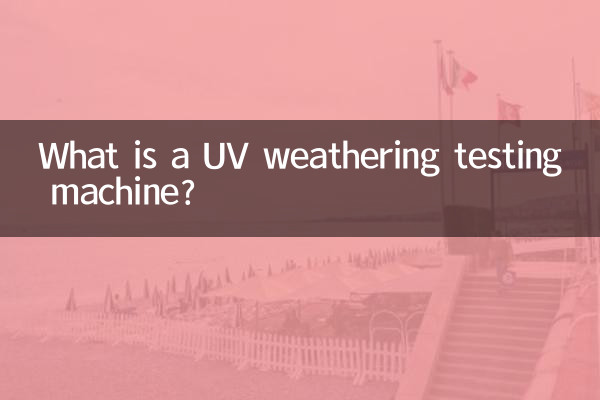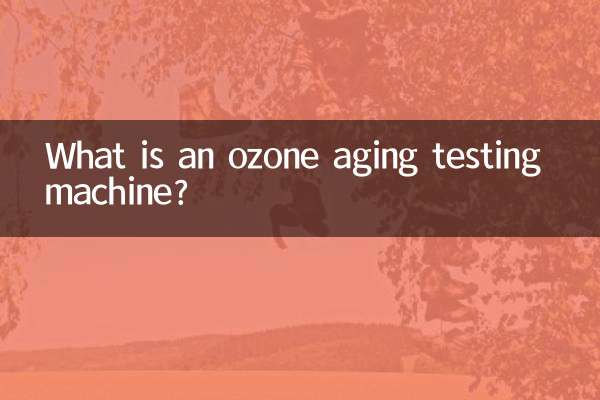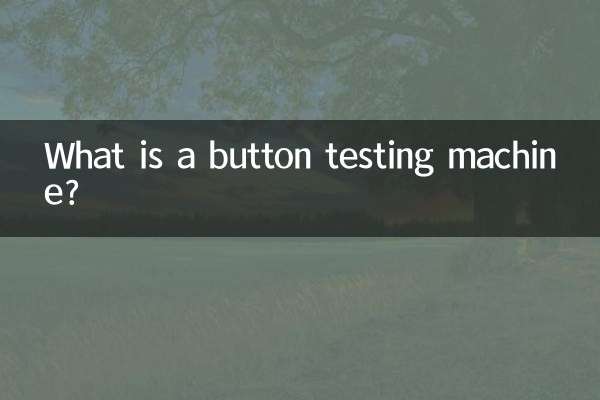What is a UV weathering testing machine?
The UV weathering testing machine is a testing equipment that simulates the effects of ultraviolet rays, temperature, humidity and other climate conditions on material aging in the natural environment. It is widely used in coatings, plastics, rubber, textiles and other industries to evaluate the weather resistance of materials under long-term exposure to UV light. The following is a detailed introduction to the UV weathering testing machine.
1. Working principle of UV weathering testing machine

The UV weathering testing machine accelerates the aging process of materials by simulating ultraviolet radiation in sunlight and combining changes in temperature and humidity. Its core components include UV light source, temperature and humidity control system and sample holder. By adjusting the intensity, temperature and humidity of ultraviolet light, climatic conditions in different regions and seasons can be simulated.
| components | Function |
|---|---|
| UV light source | Simulate ultraviolet radiation in sunlight |
| Temperature and humidity control system | Adjust the temperature and humidity in the test chamber |
| sample holder | Place the material sample to be tested |
2. Application fields of UV weathering testing machine
UV weathering testing machines have important applications in many industries. The following are its main application areas:
| Industry | Application |
|---|---|
| paint | Test coatings for weather resistance and UV resistance |
| plastic | Evaluate the aging rate of plastic products in outdoor environments |
| Rubber | Test the weather resistance and anti-aging properties of rubber materials |
| Textiles | Evaluate the color fastness and UV resistance of textiles |
3. Advantages of UV Weathering Testing Machine
Compared with traditional aging testing methods, UV weathering testing machines have the following advantages:
| Advantages | Description |
|---|---|
| accelerated aging | Shorten test time through high-intensity UV light irradiation |
| Strong controllability | Precisely adjusts UV light intensity, temperature and humidity |
| Good repeatability | Test conditions are stable and results can be verified repeatedly |
| Wide range of applications | Suitable for a variety of materials and industries |
4. How to choose a UV weathering testing machine
When choosing a UV weathering testing machine, you need to consider the following factors:
| factors | Description |
|---|---|
| UV light source type | Common ones include UVA, UVB and UVC, which are selected according to the testing requirements. |
| Temperature and humidity range | Ensure equipment can simulate required temperature and humidity conditions |
| Sample capacity | Select appropriate equipment based on the number and size of test samples |
| Brand and after-sales service | Choose well-known brands to ensure after-sales service and parts supply |
5. Future development trends of UV weathering testing machines
With the advancement of science and technology, UV weathering testing machines are constantly being upgraded and improved. Future development trends include:
1.Intelligent: Realize remote monitoring and data collection of equipment through Internet of Things technology.
2.Energy saving and environmental protection: Adopt more efficient UV light source and temperature and humidity control system to reduce energy consumption.
3.Multifunctional: Integrate more testing functions, such as salt spray testing, damp heat testing, etc., to meet diverse testing needs.
4.High precision: Improve test accuracy and repeatability through more advanced control systems.
Summary
UV weathering testing machine is an important material aging testing equipment and is widely used in coatings, plastics, rubber, textiles and other industries. It has the advantages of accelerated aging, strong controllability, and good repeatability. In the future, it will develop in the direction of intelligence, energy conservation, environmental protection, multi-functionality, and high precision. When selecting equipment, factors such as UV light source type, temperature and humidity range, sample capacity, etc. need to be comprehensively considered to ensure the accuracy and reliability of the test.

check the details

check the details